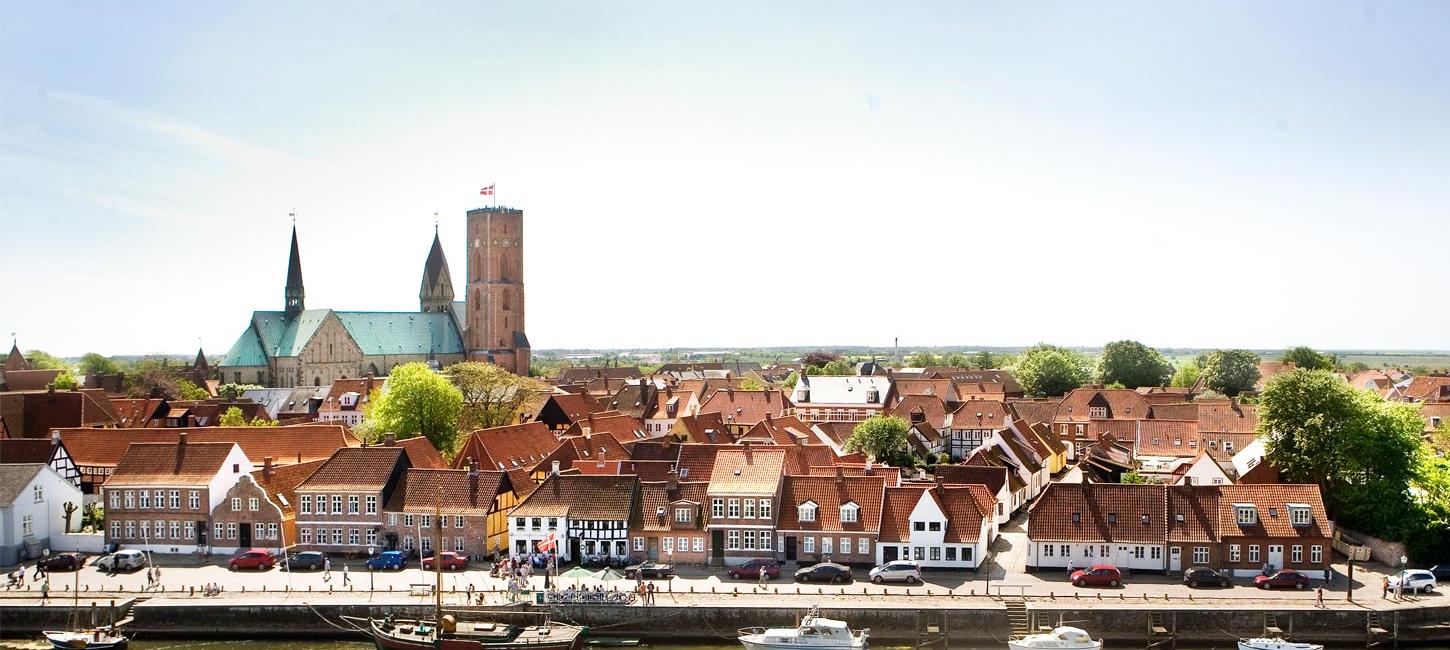
The great period of Ribe
The town of Ribe blossomed to become Denmark's only medieval North Sea Port and the presence of church and royal representatives in Ribe, underscored its high profile status in the Danish kingdom.
A Bishop See
The Vikings made Ribe so influential that, in 860, the Danish king gave the monk Ansgar, also known as the Apostle of the North, a royal decree to erect a church on the south side of the river and preach the Christian faith in Ribe. The medieval town continued to expand on the south side of the river and in the last half of the 12th century, Ribe Cathedral was erected in its present form. Parish churches, abbeys for mendicant friars, and a fortification soon followed. Ribe became a twin city: one on either side of the river. Between the two parts was built one of the largest medieval embankments in Denmark. "Dammen" is still the main pedestrian thorough fare.
Ribe was a king's town
The town of Ribe blossomed to become Denmark's only medieval North Sea Port and the presence of church and royal representatives in Ribe, underscored its high profile status in the Danish kingdom. The king spent time in Ribe, residing in Riberhus Castle that was built on Slotsbanken, where only a few scattered wall ruins remain. See the castle to the left on the drawing.
On Slotsbanken only a few remaining bricks of the castle and moat can be seen today. As well as the statue of Queen Dagmar, made by Anne Marie Carl Nielsen, erected in 1913.

